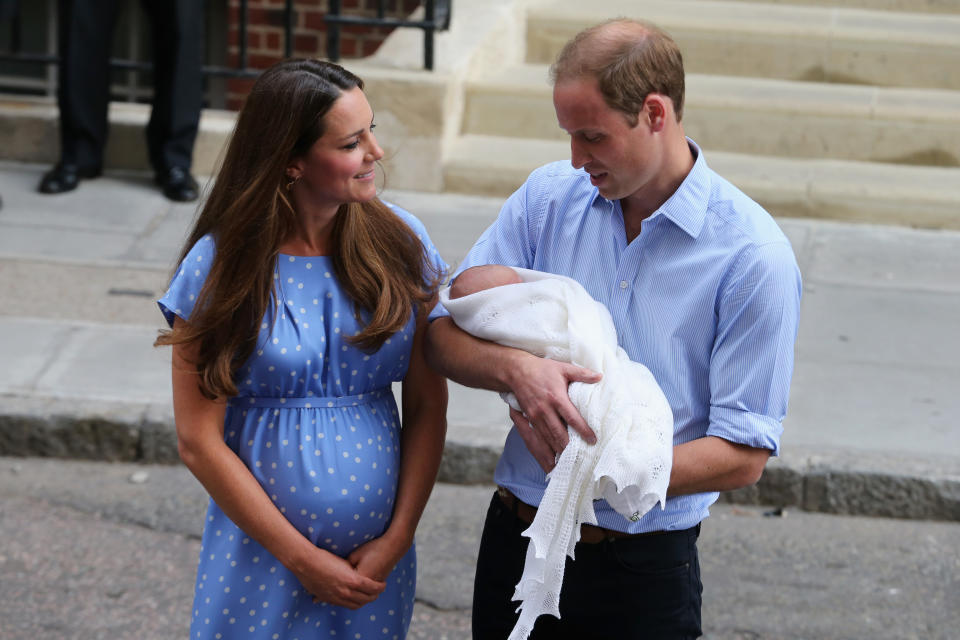New moms show post-birth bellies as emerging front in the body-positivity movement

TV host and author Daphne Oz earned serious props on Instagram last week after showing a very honest look at her postpartum body. “Seven weeks post partum, still looking three months pregnant,” she captioned a mirror shot of herself in her underwear with a slightly round belly.
“There is no bounce-back, it’s all onwards and upwards,” she said. “Every day has moments of total splendor and also a decent number of WTFs. I especially want the new mamas out there to hear that, because we see so much of how glossy motherhood can be and not enough of how real 3D life is always complicated (and better for it). Your experience will be just right for you. Prepare to be amazed by some things and horrified by others. Motherhood is as complex and wonderful as the woman.” Oz’s post earned more than 37,000 likes, and her post has been flooded with comments from women who can relate.
A post shared by D A P H N E O Z (@daphneoz) on Jan 23, 2018 at 4:11pm PST
Oz is hardly the first women to get real on social media about her figure after having a baby. Australian fitness trainer Emily Skye recently posted two photos on Instagram of herself holding her newborn daughter, Mia. “So many people told me I would ‘bounce right back’ after giving birth like a lot of other fit women do,” she captioned the shots. “Well that’s definitely not the case for me! It’s only 5 days after I gave birth to Mia and I look about 6 or so months pregnant.” Hilaria Baldwin also posted a photo of herself on Instagram in 2016 with a belly pouch after giving birth to her son, Leonardo. Kate Middleton also famously showed the contour of her postpartum belly, through a hugging polka dot dress, after giving birth to her first child.
A post shared by Hilaria Thomas Baldwin (@hilariabaldwin) on Sep 14, 2016 at 10:25am PDT
“It is very normal to look as though you are somewhat pregnant postpartum up until four months after you give birth or even longer,” Jessica Shepherd, MD, a minimally invasive gynecologist at Baylor University Medical Center in Dallas, tells Yahoo Lifestyle. “It usually takes six months or more to get to the point where you can look somewhat similar to the way you did prepregnancy.”
There are a few reasons why this happens. After a woman gives birth, her uterus is still a larger-than-normal size, even though it no longer holds a baby. It starts to shrink about 12 hours after delivery, but the process is slow — it usually happens at a rate of about 1 centimeter a day, Christine Greves, MD, a board-certified ob/gyn at the Winnie Palmer Hospital for Women & Babies in Orlando, tells Yahoo Lifestyle. “The uterus usually returns to its normal size after about six to eight weeks,” she says.
But, of course, everyone is different. Women who have had previous pregnancies or have given birth via C-section may have a belly pouch for longer, Greves says. Breastfeeding can also make a difference — nursing causes the release of the hormone oxytocin in a woman’s body, which stimulates contractions in her uterus and help it shrink, she says.
It’s not all about uterine size, though. A woman’s abdominal muscles can become stretched during pregnancy and those take time to go back to normal, too, Shepherd says. A woman may even suffer from diastasis recti, a condition in which her large abdominal muscles separate — and that can create the appearance of a belly pouch. Finally, a woman’s skin becomes stretched out during pregnancy and does not immediately “bounce back,” Shepherd says.
In sum, it’s very normal to still look “pregnant” after giving birth — and even for months afterward — which is why Shepherd says this trend of showing off the postpartum body is good thing. “It allows people to celebrate having birthed a baby and allows women to be more open about the postpartum period,” she says. Of course, if you happen to have a bigger belly than the postpartum photos you see on social media, it doesn’t mean something is wrong with you. “Everyone is different,” Shepherd says.
Read more from Yahoo Lifestyle:
Follow us on Instagram, Facebook, and Twitter for nonstop inspiration delivered fresh to your feed, every day.
